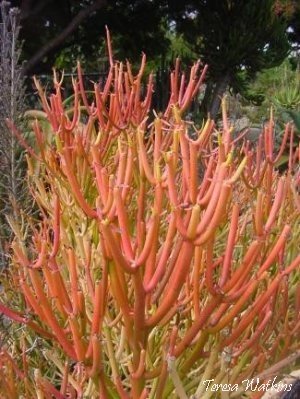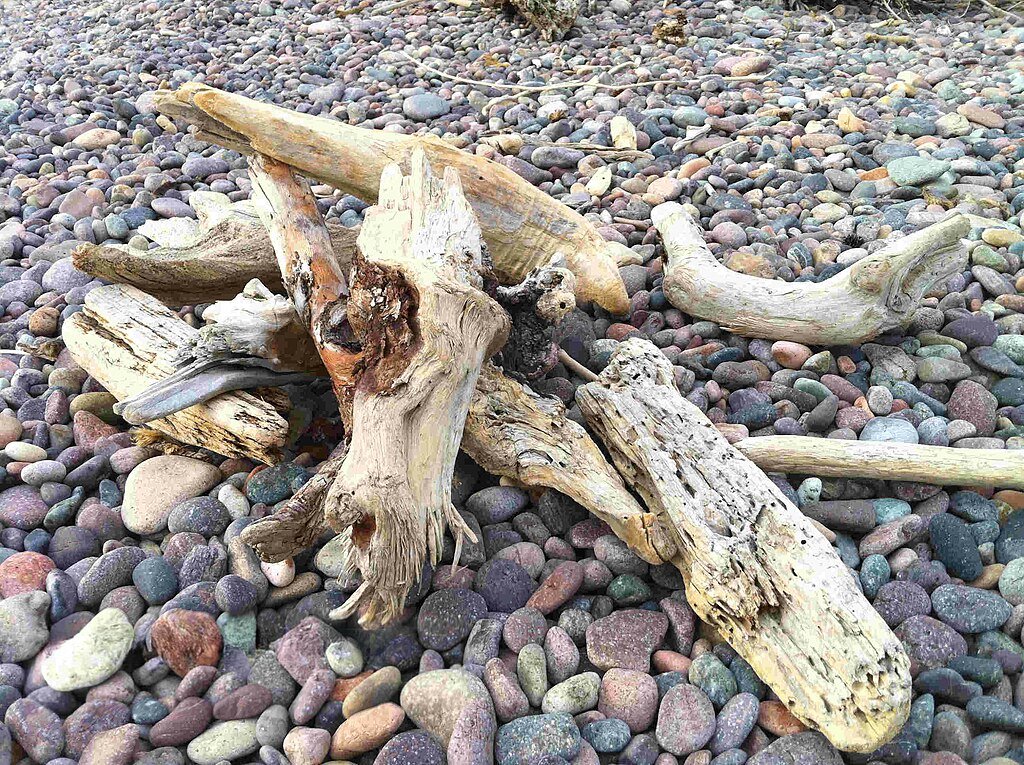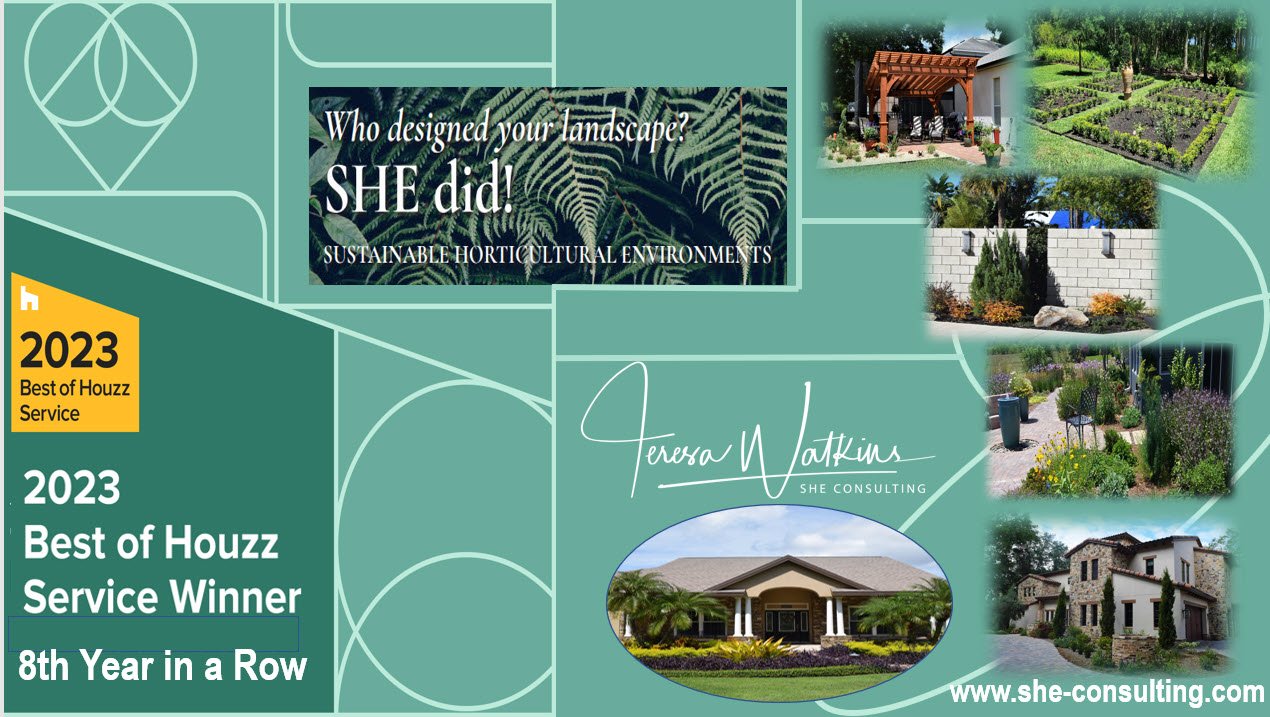Sea World ride display gardens., Orlando Florida.
There is a great Beatles song, 'Octopus's Garden' that suggests a perfect theme for your summer beach gardening scene. What better way to bring the ocean into your own backyard ⸺ whether you live in Miami, Florida or Miami, Oklahoma ⸺ than to have a landscape that whisks you down under the sea to Neptune’s tidal garden when your eyes behold it, and you don’t even need to worry about the salt spray or getting sunburned.
On a previous visit to the Discovery Gardens at the UF/IFAS Lake County Extension Discovery Gardens, I was thrilled to see an ‘Ocean Reef’ Children’s garden. The three bedding plants used to inspire the school children’s imaginations got my creative energies whirling and I thought, “What a great theme!”
To start, if you live by the seashore or close to the ocean, you need to know what plants will thrive in an alkaline, salt water location. A great resource for selecting salt-tolerant plants is by a local Florida beach city nursery, Rockledge Gardens.
But how does that help a land-locked sea dog gardener like you? If you don’t have a beautiful beachfront landscape yet you yearn to lie on a beach towel and catch the rays in your own underwater paradise, put a conch shell to your ear and read on.
Here are some suggestions to help you create your own “Octopus’s Garden.” I’ve selected a variety of flowers, shrubbery, trees, and groundcovers guided by Poseidon and maritime-sounding common names to invoke our undersea theme. How many do you recognize? Remember to make sure the sunlight, soil, zone hardiness, and moisture conditions are right for your own backyard before buying and installing any of these plants.
Flowers and Shrubs
Anemones, Anemone coronaria, also known as windflowers, are members of the buttercup family. But the sea anemones (get it?) are creatures whose brightly colored shapes and cluster of tentacles outwardly resemble terrestrial flowers. In your beach garden, anemones are flowering bulbs that will bloom in the spring and summer and like sunny areas in northern climes and partial shade in the South. Shrimp plants, Justicia brandegeana is a good choice. Put a few of these lovely butterfly and hummingbird-attracting flowers close to your Bar-bee. Bright yellow, greyish-green, or red flowers, these plants love the sun and are pest resistant.
Shrimp plant, Justicia brandegeana
If you have lots of shade, you can use Coral bells, Heuchera spp., Coralbush, Jatropha multifida, or Coral bean, Erythrina herbacea for Zones 7 through 9. Coralberry, Symphoricarpos orbiculatus, can be used in cooler climates up through Zone 3, all of which are common names that smack delightfully of Poseidon’s reefs. If you want to conjure images of being underwater, plant the Celosia argentea, var. cristata, a member of the amaranth family which is reminiscent of brain coral which boasts great colors and is very effective in tidal waves of mass plantings across your ocean, I mean your garden bed. Vines that continue the coral theme include coral vine, Antigonon leptopus, and the popular, fragrant coral honeysuckle, Lonicera sempervirens.
This Pencil cactus, looks just like the Bamboo coral under the sea.
Large ornamental shrubs can be used such as the Sea Grape, Coccoloba uvifera. It is a natural for the beach look, where it loves sandy soils and salt air. Other large shrubs include beach elder, Iva imbricate, Sea lavender, and Sea rosemary, Argusia gnaphalodes.
Shells are a given in an oceanfront garden, so how about the Shell Flower, Moluccella laevis? It’s also known as Bells of Ireland and Molucca Balm because it was originally thought to be a native of the Molucca Islands. These lovely, chartreuse, biennial flowers love the sun or partial shade and thrive in Florida up through Zone 4. Another shell that should be on your “beach” is the Shell ginger, Alpina zerumbet. Growing beautifully in shade, the tropical variegated foliage with large, colorful flowers, is hardy into Zone 8 and must be allowed to survive two winters to blossom.
Shell ginger, Alpinia zerambut.
Crotons, Codiaeum variegatum, look divine in your garden and can remind you of colorful, exotic, underwater grasses, and sea urchins. Varieties like Mammy, Gold Dust, Johanna Coppinger, Dreadlock, Piecrust, and Banana Leaf. Check crotons out and see which one transports you underwater.
Looking for still more flowers and shrubs appropriate for your Octopus’s garden? Try the daisy sea oxeye, Borrichia frutescens, the sea holly, Eryngium alpinum, the tropical lobster claw, Heliconia bihai, or the pearl lanceleaf, Anthurium scandens.
If you are fortunate to have an island bay [translation: water garden] in your backyard, make sure you have eel grass, Vallisneria neotropicalis, native in most parts of the United States, but can also be found at aquarium stores.
Large ornamental shrubs can be used such as the Sea Grape, Coccoloba uvifera. It is a natural for the beach look, where it loves sandy soils and salt air. Other large shrubs include beach elder, Iva imbricate, Sea lavender, and Sea rosemary, Argusia gnaphalodes.
Looking for still more flowers and shrubs appropriate for your Octopus’s garden? Try the daisy sea oxeye, Borrichia frutescens, the sea holly, Eryngium alpinum, the tropical lobster claw, Heliconia bihai, or the pearl lanceleaf, Anthurium scandens.
If you are fortunate to have an island bay [translation: water garden] in your backyard, make sure you have eel grass, Vallisneria neotropicalis, native in most parts of the United States, but can also be found at aquarium stores.
Succulents and cacti can be an incredible choice for your backyard beach if you select carefully your locations. Starfish Cactus, or Starfish Plant, Stapelia gigantea, has an incredible stellar flower that reminds your guests of a starfish. Its’ long stems remind you of a real green octopus. All the Stapelia species would work in a marine theme.
Check out these sea-worthy inclusions for your ocean bed:
· Agave americana
· Aptenia sp.
· Beschorneria yuccoides
· Crassula obvata
· Dudleya caespitosa
· Dyckia sp. “Burgandy Ice"
· Euphorbia lacteal
· Euphorbia trigona
· Haworthia attentuata
· Orbea ciliata
To cover bare patches of sand with suitable groundcovers, look for beach morning glory, Ipomoea pes-caprae, ‘Blue Pacific’ shore junipers, Juniperus conferta, (which gets double botanical points for having a real ocean in its’ name). Sea oats, Uniola paniculata, if they are available in your area — is a plant that will evoke windy seaside dune breezes in your Octopus garden. Sea oats are an endangered species and are federally protected, so never take them out of the wild and always buy them from a reputable native plant nursery! Blackbeard’s ghost will haunt you forever if you do!
Trees
Spreading canopies of shade in your oceanfront landscape can include such ocean-themed habitants as crabapples, Pyrus coronaria, and crabwood, Ateramnus lucidus. The blue beech, Carpinus caroliniana, a member of the birch family, also known as American hornbeam and musclewood, is another good tree to remind us of idyllic ‘beech’ views. Blue beeches are handsome, deciduous trees with gray bark and blue green leaves. Native from Texas and Florida up through Maine.
What’s a beachfront without palm trees? And what’s an Octopus garden without pirates? A perfect choice is a Buccaneer palm tree, Pseudophoenix sargentii, which can be a container palm for those zones above 9 and 10. Clustering fishtail palm, Caryota mitis, also works well in the Octopus’s garden.
You can use your shady areas for a nice tropical beach garden by using Rattlesnake plants, Calathea lancifolia, which has incredible markings on it, and the Cast Iron Apidistra, Aspidistra elatior, that suggests types of underwater grass.
Rattlesnake plant, Calathea lancifolia
Cast Iron Plant, Apidistra elatior
If you have a deck or patio, wrap round poles together with thick rope to represent a pier. Plant around the base of the poles or add a container of nautical-themed plants. Accessories will help expand and unite your ‘under the sea’ theme: lighthouses, sea shells, sand pails, shovels, umbrellas, parrots, skull and crossbones flags, Union Jack flags, model ships, marine flags, tiki torches, assorted crabs, fishing nets, fishes, and lobsters, seahorses, bamboo fencing, oars, aft and stern portions of a rowboat, round plastic life preservers, flip-flop sandals, rafts, mermaid statues, treasure chest, skeletons, cement sand castles. Look for these items at your local craft stores, statuary businesses and catalogs, party supply stores, and boating centers.
Finding these plants may take a little work, but if you know what you’re looking for, get in your little yellow submarine, haul out your plant catalogs, search the Internet and with a little effort, create a treasure map and mark an X where you think you will find your plants. I’m sure you’ll be rewarded for having a little imagination and digging some treasures in your own backyard, no matter where you live.
If you enjoy eating fruit, your whimsical seashore can include Key limes to reference obvious geographical locations such as Key West, Key Largo and the rest of the Florida Keys, and navel oranges – all right, navel oranges are a stretch, but they succeed in two ways: 1), what do you see at the beach? Right…navels, plenty of bellybuttons, 2) is that you can’t have an ocean garden without the presence of a maritime navy – ergo, naval orange. Hey! You have to work with me here – I’m being creative.
Speaking of being creativel, even the busy or uninspired gardening enthusiast can have an Octopus’s garden. Just stick a broken boat plank sign up in your front yard with “crabgrass” on the sign to explain why you have such fitting weeds. If you really have a sense of humor, just wait ‘till Chapman’s Skeletongrass Gymnopogon chapmanianus, finds its way to your pseudo-seaside retreat and display it with pride next to a nautical treasure chest filled with gold doubloons and Mardi Gras beads.
Designing your maritime flower, shrub, and tree placement depends on your height, depth, and color preferences. It’s your Octopus’s garden – don’t be afraid to have contrasting colors, sizes, and leaf textures. Set out your choices in their nursery pots and move them around until you are satisfied. Don’t hesitate to stand back and look at your design from every angle, including an upper story floor or neighbor’s yard if you can.
Sea World, Orlando, FL.
Accessories
If you live in zones 3 through 7 and you can’t have a year-round tropical paradise, you could display your coastal plants in nautical containers that will help contribute to the ambiance of your oceanscape. Containers for beachfront yards can include various red, white, or blue plastic containers with thick hemp cord handles. Make sure you have good drainage. You can integrate oversized conch shell planters or employ unused rowboats -- either real or unused children’s toys -- to beach on your sandy berms. Plant your ornamental shrubs, flowers, and even your trees and palms in them.
An important part of a seaside design is the use of driftwood. Using driftwood as a planter, art piece, statuary, or as edging, definitely “wood” be a great use of organic materials.
Driftwood, Wikicommon.
Create a post with different directional signs pointing to your favorite botanical gardens or island resorts. Attach a seagull to the top of the sign post or hang a parrot swinging from your tree.
Photograph by Danielle Aquiline https://www.entouriste.com/relaxing-in-key-west/zachary-beach-signs-key-west/
Plant labels can highlight the jewels of your sea garden and provide humor in setting the stage for a summer of fun. Place your labels with the common names on paper resembling torn flags under your plant selections so that the writing is easily legible from a few feet away. Making the mailman, milkman, pedestrians and neighbors laugh as they pass your house will earn you buccaneer points.
Octopus's Garden
(Lennon/McCartney)
Abbey Road (1969)
I'd like to be under the sea
In an octopus' garden in the shade
He'd let us in, knows where we've been
In his octopus' garden in the shade.
I'd ask my friends to come and see
An octopus' garden with me
I'd like to be under the sea
In an octopus' garden in the shade.
We would be warm below the storm
In our little hideaway beneath the waves
Resting our head on the sea bed
In an octopus' garden near a cave.
We would sing and dance around
because we know we can't be found
I'd like to be under the sea
In an octopus' garden in the shade.
We would shout and swim about
The coral that lies beneath the waves
(Lies beneath the ocean waves)
Oh what joy for every girl and boy
Knowing they're happy and they're safe
(Happy and they're safe).
We would be so happy you and me
No one there to tell us what to do
I'd like to be under the sea
In an octopus' garden with you.
“Creating a Beach-view Octopus Garden” updated from originally published August 13, 2006
Florida’s most popular garden expert and landscape designer, Teresa Watkins answers your gardening questions on Better Lawns and Gardens. Listen every Saturdays from 7am - 9am EST on WFLA- Orlando and on Audioboom podcast 24/7. https://bit.ly/3c1f5x7






























